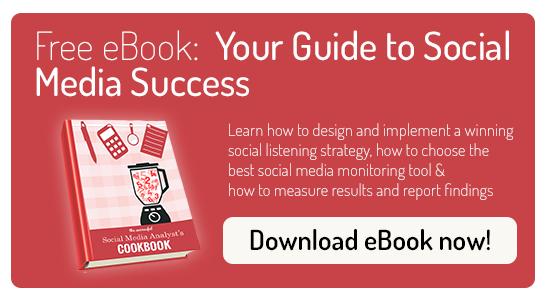3 Social Media Strategies for Universities backed by Social Media Analytics
When it comes to social media strategy, U.S. universities are schooling the masses, but luckily their tactics aren’t just reserved for those with a college fund and the time for a degree. No, brands can learn a lot from higher education institutions simply by looking at their social networks and seeing how they market themselves, maintain their reputations, engage their consumers (i.e. the community of students) and promote their wide variety of products, those being courses and extracurricular activities. It might seem strange for a college to be commodifying something as fundamental as education, but when it comes to converting applicants to freshmen, social media has replaced the printed prospectuses and become an essential; in fact, Drake University’s 2013 study found that one in five of their students were influenced to enroll there because of the college’s social media presence.
You see, Universities like Drake are using social media to improve their overall brand image, but this is only possible through social media monitoring. Universities who are investing in their online reputation must encourage people to connect with campus life online, keep track of their engagements on all social networks and most importantly justify ROI, so a good social listening tool is not just helpful; it’s mandatory. Social media data and analytics are crucial when it comes to the 3 most important areas of a university’s social media strategy, and here’s why:
#1. School Spirit & Brand Image
What do all of the most prestigious colleges have in common? A sterling reputation and powerful branding. Just look at Harvard University; with more than 3 million fans on Facebook and over 330,000 Twitter followers, they’re proof that a carefully maintained reputation and good brand visualization on social media is rewarded. Everything they post features the crimson Harvard shield, whether it’s news about the latest research or footage of their men’s basketball team winning the Ivy League championship, encouraging school spirit and amplifying their brand message.
But what about the posts they can’t control; negative comments about their institution that are shared by others online? Universities like Harvard use social listening to keep track of everything said about their brand online, so they can react immediately and keep their brand image in tact. And it’s not just comments; social listening tools are getting high tech and monitoring image-based social networks like Instagram and Pinterest, so even unflattering photos are getting picked up and analysed in case they pose a threat and require immediate action.
#2. Enhancing Student Experience
As all students know, the transition from high school to higher education is like moving from a fish tank into the ocean and it can often feel as though there is little support available. Social media is like a constant Q&A session for students, but how do universities make sure every student feels as though he or she is being heard? Again, social listening is key. Those in charge of monitoring conversations about university life can respond to students and give them the answers they need, sometimes even from directly within their social media monitoring tool. Thanks to this process, students are connecting with all aspects of college life through social media including where to eat, what events to attend, office hours of their tutors, etc.
Furthermore, when it comes to enhancing the student experience, colleges are promoting sports, clubs, research and all other aspects of campus life through social media, but they need to make sure their content is being seen; otherwise what’s the point? Social media measurement enables colleges to check the level of engagement with every new post, so for example they can see if a promoted event is being shared or if people are talking about their school newspaper articles. With social media monitoring they can check when content is being shared, the number of mentions, the sentiment of these mentions and the most popular media type to determine the optimum conditions for each post, and therefore adjust future content to ensure its success.
#3. Attracting Prospective Students & Staying Connected with Alumni
Marketing and customer retention are just as important for universities as they are for brands, and social media has become the avenue for attracting future students and staying connected with those that have left. When it comes to marketing to the high school demographic, videos and images of student experiences generate the most engagement whereas with alumni, things like university research news and sports results appear to be more popular. Social media channels are perfect for sharing all kinds of content, but social listening is essential to find out which networks prospective students are most active on and which are better for targeting alums.
What’s more, marketing ROI is about the numbers; how many people saw it, and out of those, how many liked it enough to engage and join the online community? Social media measurement is the only way for a college to justify its investment in social media marketing to the department in charge of divvying up the budget, because the social media data collected after a campaign is tangible, numerical proof of whether it was successful or not. So when it comes to convincing university departments of social media’s importance, social media monitoring is the most important thing of all.
To learn more about how to make social media work for your business, contact us today for a live demo of Digimind Social.
Written by Jerome Maisch
Marketing Manager @digimindci. Passionate about big data & social marketing. Photography, music and hiking lover

